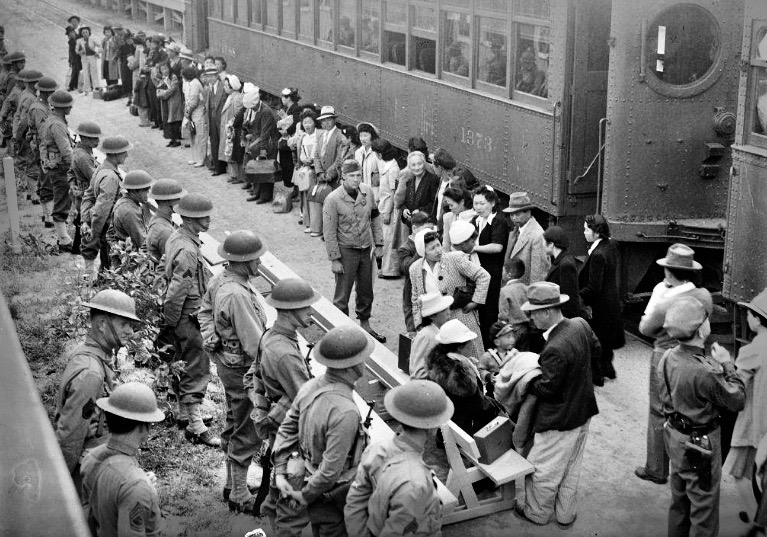NATHAN RIVAS WRITES – Recently, the California legislature formally apologized for the state’s role in the incarceration of more than 120,000 people of Japanese descent in internment camps during the second world war.
Now, a recently uncovered artifact reveals that Loyola University, (so-called before its merger with Marymount college in 1973, thereby becoming Loyola Marymount University), housed and employed several victims returned from Japanese internment camps in 1945.
The artifact is a letter from Father Edward Whelan, president of Loyola University from 1942-1949, written on November 27, 1945, and it is actually quite simple. In it, he requests permission for a Japanese woman to use the basement of the priests’ monastery in order to be employed as a laundress. The woman and her husband, he writes, are devout Catholics and good people. Though just one small letter, this was one great step for mankind—and for LMU, then a beacon of light at the center of one of America’s most historically shameful moments.
The artifact was displayed by the history department at Loyola Marymount University, which recently opened an exhibit at the William Hannon Library, and which will remain open throughout the Spring 2020 semester. The exhibit, curated by students of Professor Elizabeth Drummond’s ‘Public History’ course, displays several artifacts from LMU’s Department of Archives & Special Collections which have never been made public before.
The story goes as follows: after the bombing of Pearl Harbor in 1941, anti-Japanese sentiment became commonplace in American culture and government. In 1942, President Franklin D. Roosevelt authorized the internment of American citizens and immigrants of Japanese ancestry through Executive Order 9066. Within six months, over 110,000 men, women, and children of Japanese descent were removed from their homes and ushered into internment camps.
As a result of this displacement, many families and individuals lost their property, careers, and livelihoods. Ten poorly constructed camps, surrounded by barbed wire fences and heavily armed military personnel with orders to shoot internees who tried to escape, held prisoners for the duration of the war. Families were stuffed into single rooms with just one dim light source; and each person had to construct his own mattress from sacks of straw. Others lived in converted horse stables. Imagine how this felt, especially, for Japanese-Americans who strongly identified with American ideals.
By January of 1945, all but one internment camp had shut down and internees were allowed to re-enter American society; but those who returned were challenged with the seemingly impossible task of rebuilding their lives. They faced financial burdens, traumatic experiences, emotional hardships and of course remaining large-scale, anti-Japanese discrimination and hostility.
Enter Loyola University, in an act of social justice which defied anti-Japanese sentiment long before the American government apologized. LMU upholds this method of social activism today, raising an interesting question: What more can private institutions do go advocate for social justice in light of modern oppression and inequality?
The exhibition will remain open to the public until the end of the Spring 2020 semester.
Nathan Rivas is a senior history major at Loyola Marymount University and contributing editor at Asian Media International. Excerpts from his essay of the same name, published through LMU, were used in this story.

